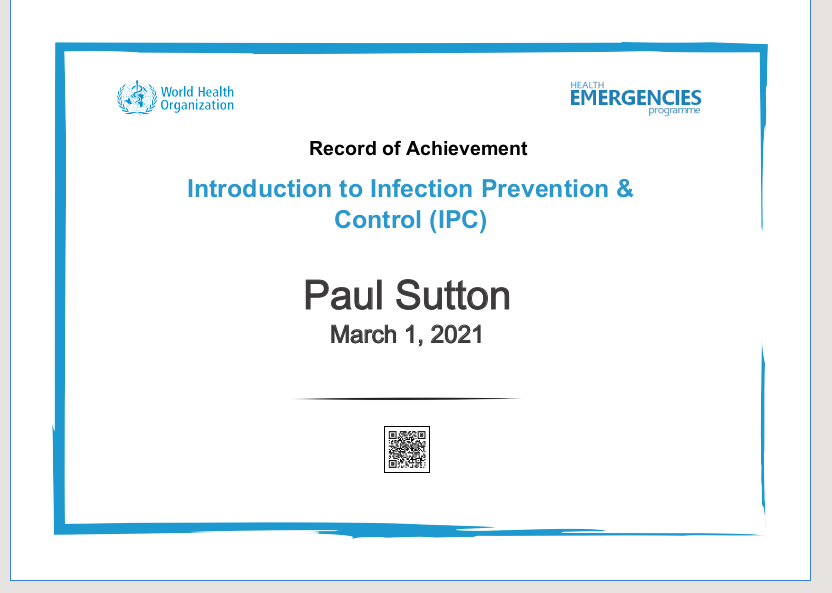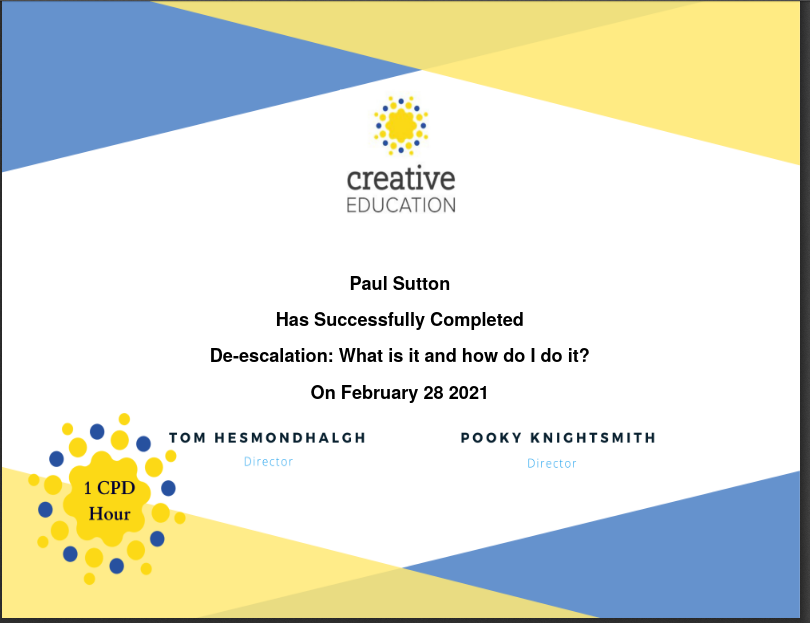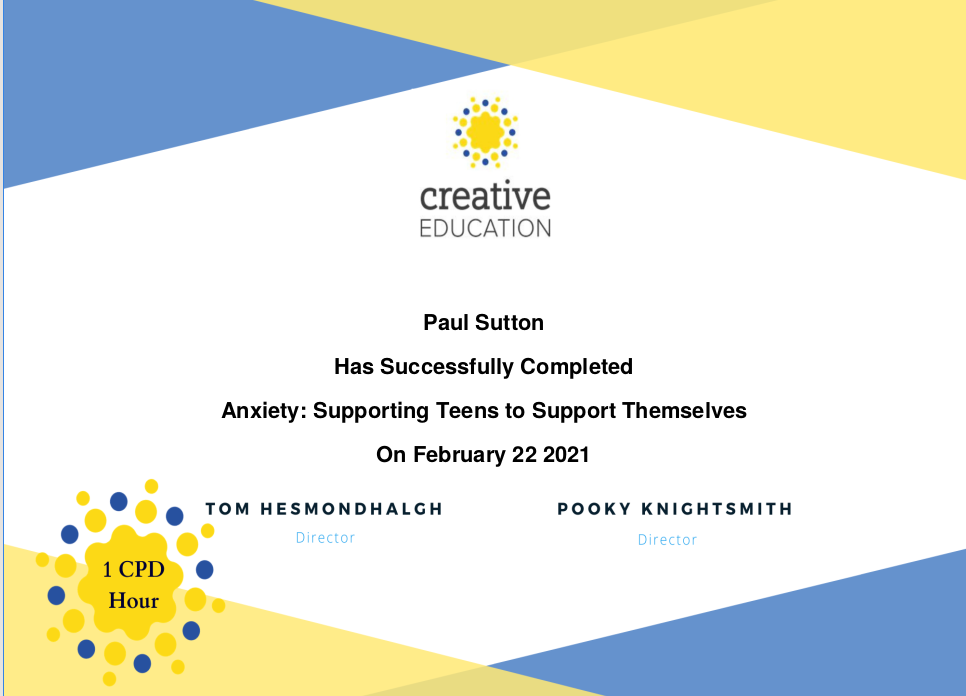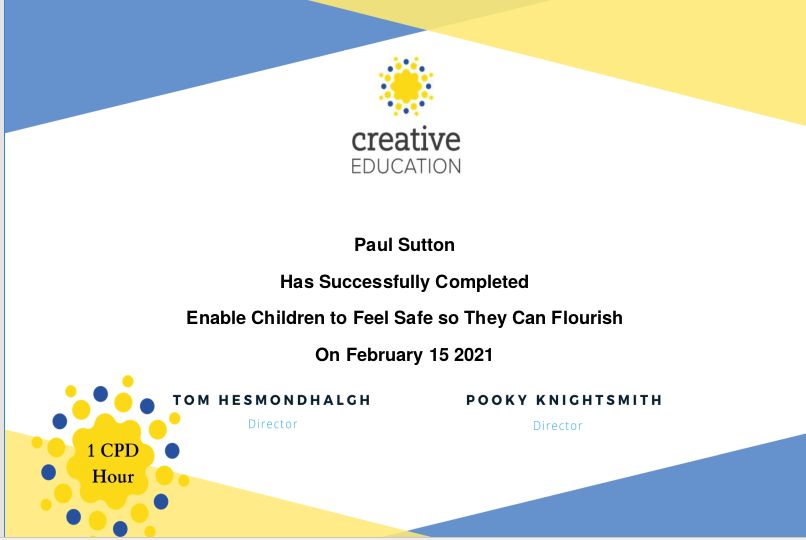Enable children to feel safe – Review
Review of
HOW TO ENABLE CHILDREN TO FEEL SAFE SO THEY CAN FLOURISH
Having completed the course I decided to write a review on this. My previous post was a quick post to say that I undertook the course.
REVIEW
This course is presented by Pooky from Creative Education. Pooky has lots of experience and knowledge in this and related areas.
So the course has 4 main component areas:-
- Emotional
- Cognitive
- Physical
- Socially
Is is also worth mentioning that the course is really up to date as it mentions we are in the current Covid 19 pandemic.
Course is presented in 4 short vidoes on each of the above topic area, complemented by other videos, also by Pooky with some more specific advice on techniques.
So the course explains what is meant by each of the above areas, then looks at a view techniques we, as adults can use to help children but also help us reflect on our own experiences, in doing so this can feed in to how we help children.
EMOTIONAL SAFETY
This looks at how we can help children cope with different situations, that they make them feel scared or anxious, and how we can help them, that it is OK to feel scared and this is normal and it is good to talk about it
This is explored in a short video, which, while bite size, packs a lot of information and advice
Using an example of exams or tests the course looks at how children can refect on their feelings and put a plan in place if something goes wrong, for example you get to the exam and your mind goes blank, so the plan then could be perhaps some deep breathing to help you calm and refocus.
Interesting that, while not mentioned as practitioners we could perhas give examples of how in sport players may have a routine to go through prior to a game.
COGNITIVE SAFETY
This looks at how children need an environment that helps them develop by being
- Safe to learn
- Safe to try
- Safe to make mistakes
- Allows us to learn from mistakes
This is useful as children need to have freedom to try things out, make mistakes, and learn from these, it also encourages practitioners to learn along side the children so they also become learners,
Practitioners can be role models to set a good example, we all makes mistakes. The course also looks at how we can help children develop a 'joy for learning' by removing fear of failure children will keep trying and be able to reflect and move forward.
PHYSICAL SAFETY
This looks at the learning environment, not just the Health and Safety viewpoint but the fact children need to feel it is a safe environment, how we can help children feel they are safe through for example reassuring and talking to them
SOCIAL SAFETY
This looks at social skills, so children are able to interact with other children and adults in the environment, the barriers that may make this difficult for some children (SEN or not attending pre-school or example). Set out what they can expect, make these expectations clear, and what they should expect from adults (that they listen and act for example).
So this looks at how you may behave in different environments, or even different cultural expectations (not in the course but one example could be how we greet, do we take foot ware off) so it is important to have cultural awareness. What to do if you get something wrong.
As adults we can set the example and talk to children, we may reflect on our own experiences or knowledge. Children may worry about starting a new year with a new teacher so this will give them one less thing to worry about, one example could be not running in the corridor, but we may say the expectation would be to walk around the building. How we can help children could be through role play, for example so setting a table or in a kitchen, the role play could include washing hands (even if pretend) it enforces what is expected in that environment,
CONCLUSION
This is an excellent course, I have tired not to give too much away within this review, but give a few examples, there is much more advice within the course. There is a video early on that looks at how good enough is good enough. This is on Youtube, so I am going to share with the Open University group as this could be useful for students writing assignments.
This gives you the confidence to, and helps you let go. So that learners can submit their work and not keep making changes trying to strive for perfection.
REFERENCES
TAGS
#CPD,#Training,#Safety,#Children,#Cognitive,#Physical,
#Social,#Emotional,#Training
#YearOfTheFediverse,



This work is licensed under a Creative Commons Attribution-ShareAlike 4.0 International License






